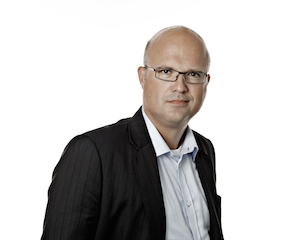
Social media platforms are a key tool with which to create and communicate an employee value proposition, according to Fredrik Tukk, head of communication, marketing and branding at Danish-headquartered employer, Maersk Drilling.
Speaking at the opening keynote session at Employee Benefits Live 2014, Tukk explained how social media was at the heart of his response to Maersk senior executive team’s challenge of doubling the size of the company within five years.
He outlined the key challenges facing the organisation, such as the lack of available key talent, because the unemployment rate in the offshore drilling industry is negligible.
He also highlighted the fact that the organisation’s brand was previously relatively unknown, so it was difficult for it to compete for the limited talent that existed for the 3,000 new posts that were being created.
Finally, he explained that the relatively high salary scales across the industry meant that the organisation could not use pay to lure talent.
Tukk said: “The best people we hire are the people who come to work for us because they buy into our values, so we decided to present our benefits and who we are through social media.”
He established a Facebook page for the organisation, despite initial reservations from his executive team, which believed that a straightforward recruitment platform would help achieve their goal.
“Facebook is where everyone is, because in the offshore drilling industry the guys that we’re looking for are a very homogenous group,” Tukk explained.
“They are actually keeping in touch with family when they’re working offshore and when they are onshore and at home having a rest they keep in contact with their mates via Facebook. That’s where we can reach them by tapping into that.”
The engagement rate of Maersk Drilling’s Facebook page is now up to 18% compared with Facebook’s average of less than 1%, which Tukk attributes to the storytelling-based focus of the account.
He said: “Our Facebook strategy is based on storytelling. We tell the story of our EVP, so, we don’t post jobs. The advantage is that we get feedback, which we can feed back to HR to inform them about what people are looking for.”
For example, one of the features of the organisation’s EVP is that it has single cabins on its rigs in which staff can sleep in between shifts.
“We publish pictures of our employees in their cabins, which is far more powerful than us posting corporate messages,” Tukk said.
”People don’t listen to those today, but if I have Jack Jones out on the rig saying, ‘hey, this is my cabin, it’s really good in here’, we get a tremendous number of likes [on Facebook].”
Tukk warns employers embarking on their own social media strategy to approach their project slowly and with great attention to detail.
“We created [our strategy] in close corporation with HR with an EVP in there to say who we are, what we can offer [recruits] and why [they] should come and work for us,” he said.
“That was the first stage. The social media strategy followed. We took small steps – there was no big bang approach.”
He added that it is key for employers to identify the target audience of their projects at the outset, to help them to identify the most appropriate communication channels and messages that will help them to achieve their objective.